The Ultimate Guide to the Best Places to Visit in Puerto Rico in 2025
Puerto Rico, known as La Isla del Encanto (the Island of Enchantment), is a Caribbean gem that blends vibrant culture, stunning natural beauty, and rich history. As a U.S. territory, it offers American travelers the convenience of no passport requirements, U.S. currency, and familiar cell service, all while delivering an authentic Caribbean experience.
From historic fortresses in Old San Juan to bioluminescent bays and pristine beaches, Puerto Rico in 2025 is a must visit destination for adventurers, history buffs, foodies, and beach lovers alike. This guide explores the best places to visit in Puerto Rico in 2025, offering a mix of iconic landmarks, hidden gems, and practical tips to make your trip unforgettable.
Why Visit Puerto Rico in 2025?
Puerto Rico’s appeal lies in its diversity. The island, just 100 miles long and 35 miles wide, packs an incredible variety of experiences into a compact space. You can explore the only tropical rainforest in the U.S. National Forest System, kayak through glowing bioluminescent bays, wander cobblestone streets lined with colorful colonial architecture, or relax on world-class beaches. The island’s unique blend of Taíno, African, and Spanish influences creates a vibrant cultural tapestry, evident in its music, food, and festivals.
Tourism in Puerto Rico is booming, with 2023 marking one of the island’s best years for visitor numbers, contributing $7.6 billion to the economy. Efforts to promote sustainable tourism and highlight lesser-known regions make 2025 an ideal time to explore beyond the usual hotspots. Whether you’re a solo traveler, a couple, or a family, here’s a curated list of the best places to visit in Puerto Rico in 2025.
San Juan: The Vibrant Capital
Old San Juan
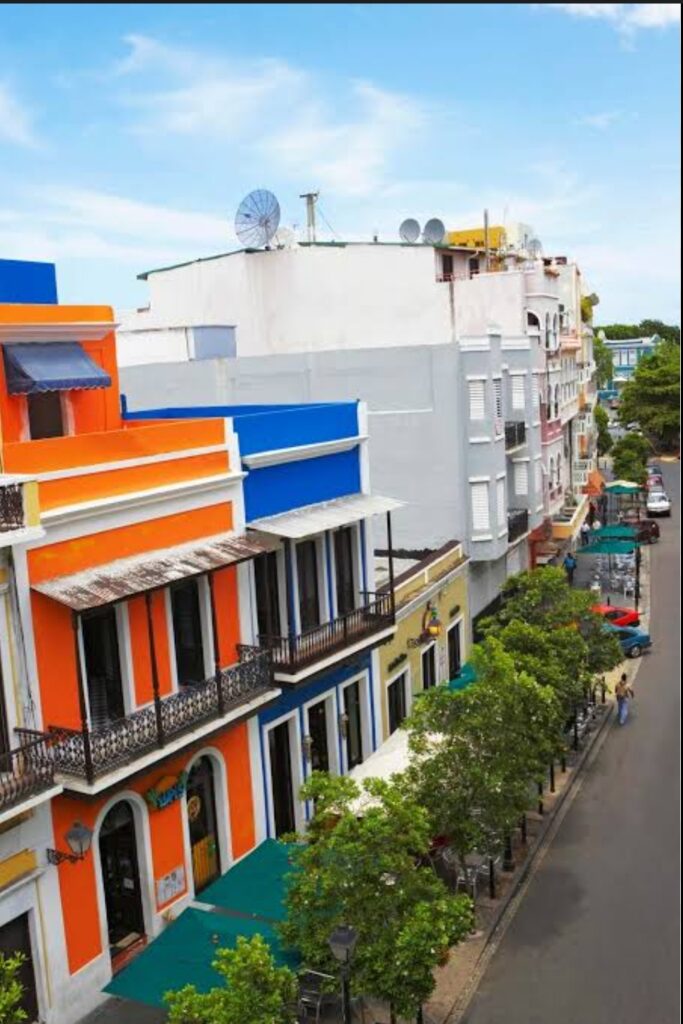
Why Visit: Old San Juan, the historic heart of Puerto Rico’s capital, is a UNESCO World Heritage Site and one of the oldest European-founded cities in the Americas, established in 1521. Its cobblestone streets, pastel-colored colonial buildings, and massive fortresses like Castillo San Felipe del Morro (El Morro) and Castillo San Cristóbal transport visitors back to the Spanish colonial era. The area buzzes with energy, offering museums, art galleries, and lively nightlife.
Highlights:
- El Morro: This 16th-century fortress offers stunning ocean views and a glimpse into Puerto Rico’s colonial past. Walk its ramparts and imagine defending the island from pirates.
- Calle Fortaleza: Known for its colorful umbrella installations and vibrant street art, this street is perfect for photos and leads to historic sites like La Fortaleza, the governor’s mansion.
- La Placita de Santurce: By day, a farmers’ market; by night, a lively hub of bars, restaurants, and salsa dancing. It’s a great spot to experience local nightlife.
- Must-Try Food: Visit Café Manolín or La Bombonera for traditional Puerto Rican breakfasts like mallorcas (sweet bread rolls) or mofongo (mashed plantains with garlic and pork).
- Good to Know: Old San Juan is walkable, but wear comfortable shoes for the hilly cobblestone streets. Free garita carts can help you navigate the area.
2. Condado and Isla Verde
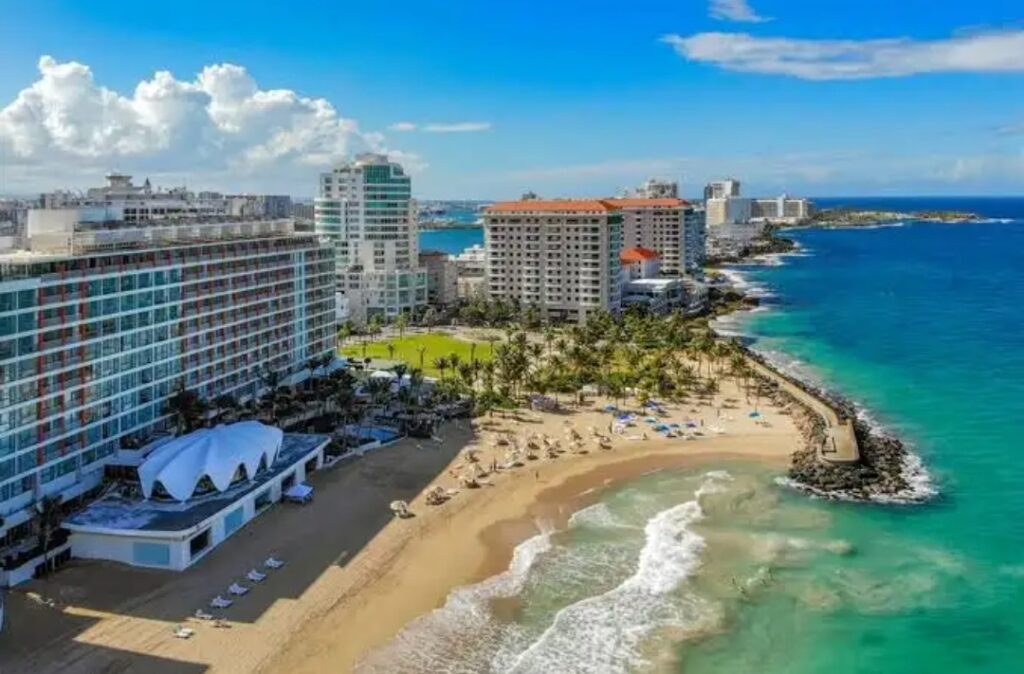
Why Visit: These upscale neighborhoods in San Juan are known for their beautiful beaches, luxury resorts, and vibrant dining scenes. Condado is perfect for shopping and dining, while Isla Verde offers a more relaxed beach vibe.
Highlights:
- Condado Beach: Ideal for water sports like windsurfing or simply lounging by the turquoise waters.
- 1919 Restaurant: Located in the Condado Vanderbilt Hotel, this fine-dining spot is renowned for dishes like scallops with organic mushrooms. Reservations are a must.
- Ocean Lab Brewing Co.: Try local craft beers like the Mambo passion-fruit wheat beer in Isla Verde.
- Good to Know: Condado is walkable, with plenty of Uber and taxi options. Be cautious of strong waves at Condado Beach, as red flags often warn of rough waters.
El Yunque National Forest: Nature’s Masterpiece
Why Visit: El Yunque is the only tropical rainforest in the U.S. National Forest System, spanning 28,000 acres of lush greenery, waterfalls, and diverse wildlife. Located just an hour from San Juan, it’s a nature lover’s paradise with hiking trails, ziplining, and breathtaking views.
Highlights:
- La Coca Falls: A stunning waterfall perfect for photos and a refreshing dip.
- Yokahú Tower: Climb this observation deck for panoramic views of the rainforest and coast.
- El Portal Visitor Center: Learn about the forest’s ecosystem, including the iconic coquí frog and Taíno petroglyphs.
- Must-Do Activity: Book a guided tour for hiking or ziplining to access hidden spots like natural pools and less-crowded trails.
- Good to Know: Trails can be muddy, so wear sturdy shoes. Visit early in the morning to avoid crowds, and check for closures due to weather or maintenance. The best time to visit is February to April for milder weather and fewer crowds.
Vieques and Culebra: Island Escapes
3. Vieques
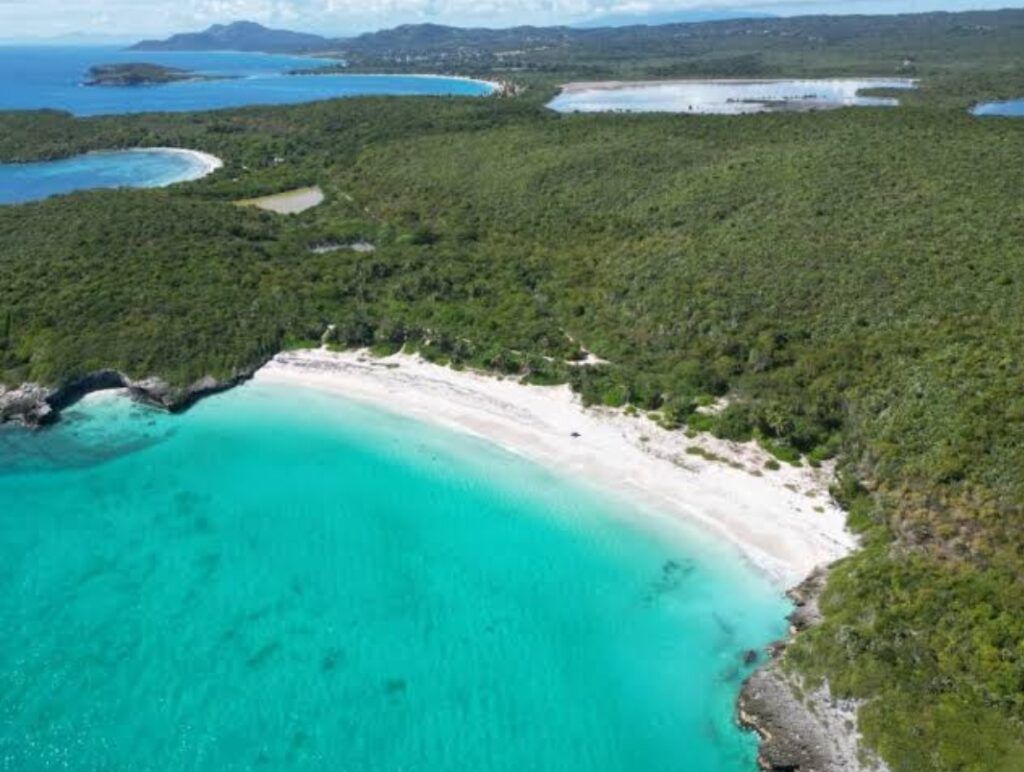
Why Visit: This small island, a 30-minute flight or 45-minute ferry from mainland Puerto Rico, is home to Mosquito Bay, one of the world’s brightest bioluminescent bays. Vieques offers untouched beaches, wild horses, and a laid-back vibe with no stoplights.
Highlights:
- Mosquito Bay: Kayak at night to see the water glow blue from dinoflagellates, a magical experience best enjoyed on a moonless night.
- Playa Caracas: A secluded beach with soft sand and wild horses roaming nearby. Rent a UTV to explore the island’s rugged roads.
- Good to Know: Book bioluminescent bay tours in advance, and opt for a kayak tour for the best experience. Vieques is ideal for a day trip or overnight stay.
4. Culebra
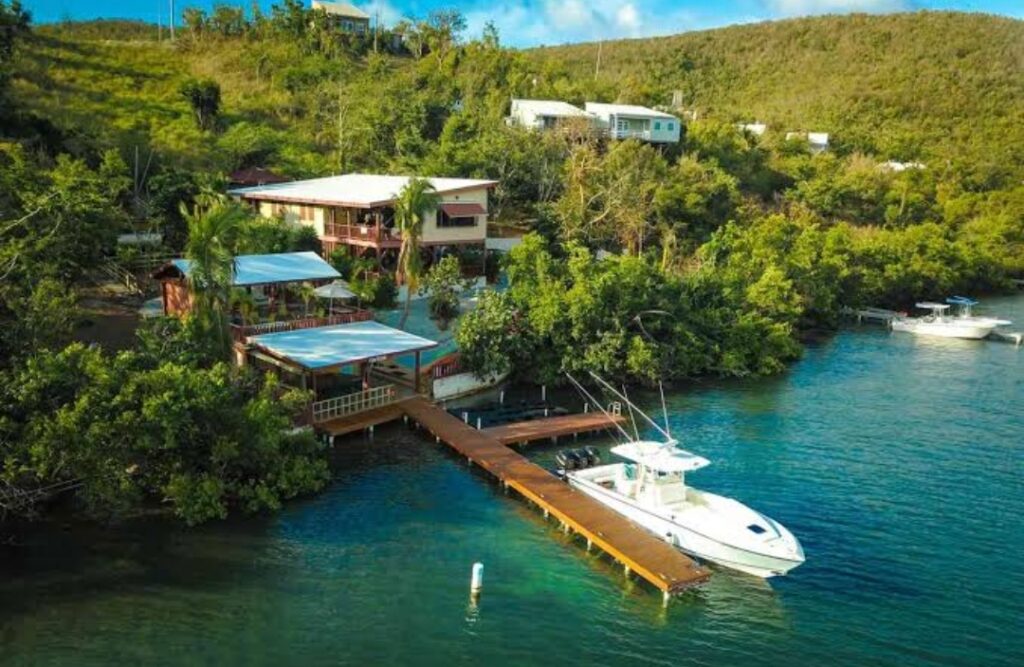
Why Visit: Culebra, another offshore island, is famous for Playa Flamenco, consistently ranked among the world’s top beaches for its white sand and clear waters. It’s a snorkeler’s paradise with vibrant marine life.
Highlights:
Playa Flamenco: Perfect for snorkeling, sunbathing, and photographing the rusted tank near the shore, a remnant of military history. Isla Culebrita: A water taxi ride away, this uninhabited island offers pristine beaches and hiking trails.
Good to Know: Culebra is less developed, so bring cash and essentials. Ferries can be crowded, so book tickets early.
Ponce: The Pearl of the South
Why Visit: Puerto Rico’s second-largest city, Ponce, is known for its stately architecture and cultural heritage. Located on the southern coast, it offers a quieter alternative to San Juan with historic charm and access to offshore islands.
Highlights:
- Parque de Bombas: This iconic red-and-black firehouse on Ponce’s main square is a must-see for its unique design.
- Castillo Serrallés Museum: Tour this 1930s mansion for its rum history, Japanese garden, and butterfly house.
- Caja de Muertos: A nearby island with pristine beaches, accessible by ferry for a day trip.
- Must-Try Food: Visit La Guancha boardwalk for Puerto Rican street food like alcapurrias (plantain fritters) and fresh seafood.
- Good to Know: Ponce is a 1.5-hour drive from San Juan, making it a great stop on a road trip.
5. West Coast: Adventure and Beaches
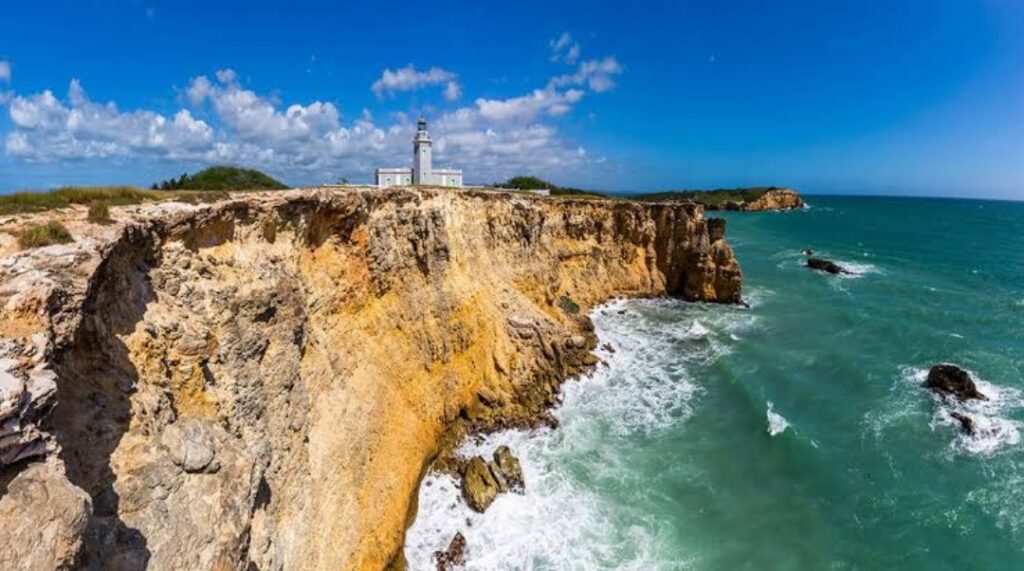
Why Visit: Known as Puerto Rico’s “party beach,” Crash Boat Beach is a lively spot with a bright green pier, perfect for snorkeling, fishing, and dancing to local music.
Highlights:
- Snorkel around the pier’s pilings to see colorful marine life.
- Enjoy frituras (fritters) from nearby food stalls.
- Good to Know: The beach can get crowded on weekends, so visit early for a quieter experience.
6. La Parguera
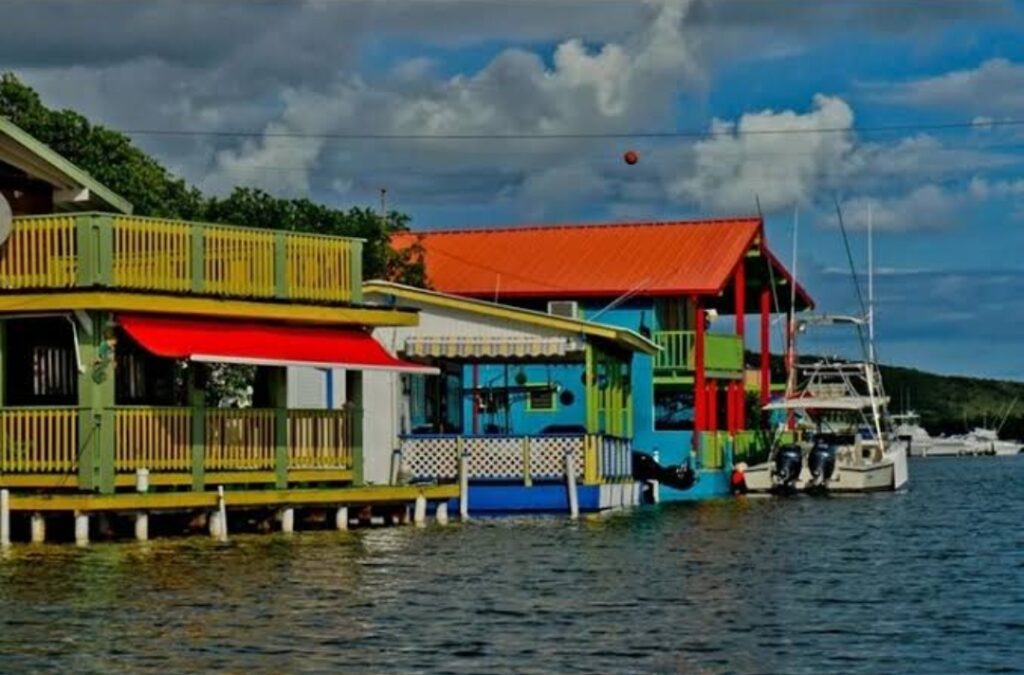
Why Visit: This fishing village in the southwest is home to a bioluminescent bay and diverse ecosystems, including mangrove forests and coral reefs. It’s ideal for nature lovers and adventure seekers.
Highlights:
- La Parguera Bio Bay: Kayak or take a boat tour to see glowing waters, though less bright than Mosquito Bay.
- Mangrove Kayaking: Paddle through mangrove channels for a serene experience.
- Good to Know: Stay in a rustic inn or Airbnb boat for a unique experience.

